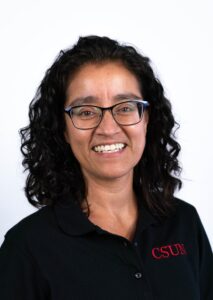
We Teach Humans, Not Subjects
During my first year of teaching, I participated in a Faculty Learning Community that was designed especially for first year faculty. At one point during our bi-weekly gatherings, one of the facilitators made the comment, almost in passing, “We teach humans, not subjects.” My brain shifted gears. His statement helped me place the student in center view instead of the subject and content of my teaching. He was from the education department, so it made sense to me that he was bringing us back to pedagogy. His admonition was that we must first and foremost attend to the humans before us. The moment has stayed with me as an ongoing question—what does it mean to consider and teach the human before me, first, and my course subject, second?
There are a couple workshops I have participated in that have helped me fill this in further—one on culturally-responsive teaching that builds on research in neuroscience and cognition, and another on what’s called small teaching. In themselves, these are full and rich frameworks with corresponding research and publications. Still, there are a couple key, practical, contributions they have made to my teaching that have stuck with me and help me keep the human brain in mind—and where my understanding of embodied teaching begins.
The first key learning about the brain is that it cannot learn when its amygdala is activated (often referred to as the reptilian brain). The amygdala is activated by stress, anxiety, anger, hunger, fear. It is instinctive, unconscious, and controls our basic body functions, increasing our heart rate and blood flow, for example, when it senses danger. If/when our amygdala is triggered enough, it can keep us in a guarded state that makes it hard to stay open enough to learn. My students’ ability to trust me, then, at least to trust me enough so they can stay relaxed enough to learn becomes my first order of business as I attend to them as whole human beings. Attending to their amygdala is important for them to be ready for the actual task of building on their knowledge and stretching their brains as I invite them to reflect critically upon religion—which is an often-fraught subject that raises people’s defenses.
This is where my learning about “small teaching” comes in—specifically the beginning and end of class. The first and last five minutes are key for easing students in and out of the learning space. I am very intentional about how I start and end the class. At the start of the class, especially at the beginning of the semester, I make sure to cover a few bases: (1) give them something to do so that they have a productive way to channel any anxious energy; (2) humanize myself to them so that they can begin to trust me a little; and (3) let them know they are allowed and encouraged to take care of themselves in our classroom so they know I respect them as autonomous beings.
I have a variety of ways to communicate these things to them, but I will paint a picture here of a common scene from day one in my typical classroom. As students enter the classroom (whether physical or virtual), a slide is already posted for them to reflect on relating to the topic of the day that includes an image and two questions: What do you notice? What do you wonder? This gives them something to do while also bringing them to the present moment. Then as I call us together to start the class, I welcome them and ask if anyone has a story to share about some recent good news or something new or fun they have done recently—there are usually one or two brave souls who are willing to share about their new pet or job or recent trip. This helps us all get a glimpse of one another as who we are outside of the classroom space. It lightens the mood a little. Finally, right before we start our discussion, I let them know that they are free to move around, stretch, do what they need to do to be comfortable in the class—they can even walk out if needed. I want them to know that I respect their autonomy and support them doing whatever they need to do to be well and to stay present in as much as it is possible.
Those are the first five minutes, where I try to help us arrive to the present moment and also try to build their trust so they are willing to hang in there when ideas get challenging. Then the last five minutes are crucial for helping students integrate the day’s learning and give their brain a chance to wrap things up. I never end my class with announcements or reminders—those come earlier—instead I end with a reflection exercise that gives them an opportunity to review, synthesize, or make note of any lingering questions they can bring to the next class. The point is to not send them out with an activated amygdala or hurl instructions at them at the last minute. And having the class end on a calm note is a way of setting the tone of “We got this, we are good for today, and we will continue next time.”
As they walk out of class is when they most often reach for the snack box. In my in-person classes, I always bring a box of snacks that has at least three kinds of bars in it (cereal bars, protein bars, granola bars). From day one I let them know that our brain does not learn when it’s hungry and I want them to be able to learn, so they can always count on the box of snacks. In a way, my approach to teaching the human starts with attending to both the brain and the stomach —because it really is all connected anyway… right?
Leave a Reply